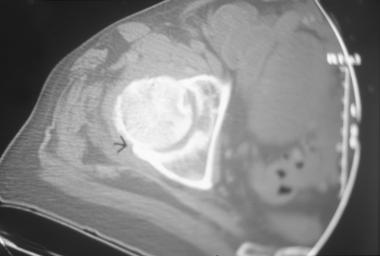I have only have 15 minutes for this follow-up consultation. We don’t have time to discuss bone health.
“In response to several question on steroids and AVN (avascular necrosis of the hip) in MSers. Most neurology consultations are simply too short to discuss all the relevant issues, in particular preventive strategies for example bone health. We neurologists, tend to focus on the here and now. If you don’t agree with this then we need to change the way we practice. Do you want change?”
“We simply don’t have enough data to be able to say how common AVN is in MSers and at what dose of steroids, or number of courses of steroids, does the risk increase. The following is a small case series of 5 cases. I recall a case of Professor W. Ian McDonald’s, who I looked after, who developed bilateral AVN of the hips after only one course of high-dose methylprednisolone for a severe spinal cord relapse. He illustrates to me that AVN can occur after just one course. In addition to steroids other risk factors that are not relevant to MS include radiation therapy, chemotherapy, and organ transplantation (particularly kidney transplantation).”
“In the early stages of AVN, MSers may not have any symptoms. As the disease progresses, however, most experience joint pain. At first, the pain occurs only when putting weight on the affected joint. Later, it occurs even at rest. Pain usually develops gr adually, and may be mild or severe. If AVN progresses and the bone and surrounding joint surface collapse, pain may develop or increase dramatically. Pain may be severe enough to limit range of motion in the affected joint. The period between the first symptoms and loss of joint function is different for each person, but it typically ranges from months to years.”
adually, and may be mild or severe. If AVN progresses and the bone and surrounding joint surface collapse, pain may develop or increase dramatically. Pain may be severe enough to limit range of motion in the affected joint. The period between the first symptoms and loss of joint function is different for each person, but it typically ranges from months to years.”
“AVN is usually diagnosed on history and examination followed by imaging. This is why well localised hip pain should be taken very seriously. The latter may include a plain hip x-ray, but a plain x-ray is typically normal early on. MRI or a CT is generally diagnostic and bone scan helps in that it identify other joints that are involved that are asymptomatic.”
“I suggest reading the NIH health information sheet for more information on AVN. The treatment of AVN is really symptomatic, but if the AVN is unilateral a core decompression of the opposite hip may prevent it becoming bilateral. However, not all orthopaedic surgeons agree with prophylactic decompression. It seems as if the evidence base regarding the latter is not black-and-white, but shades of gray; not too dissimilar to the field of MS.”
Sahraian et al. Avascular necrosis of the femoral head in multiple sclerosis: report of five patients. Neurol Sci. 2012 Dec;33(6):1443-6.
Osteonecrosis of the femoral head is a severe complication of corticosteroids, which may lead to more disability in multiple sclerosis (MS) patients because of delayed diagnosis. The exact dose and risk period of steroids which cause the necrosis are not clearly known. The aim of the study was to enhance the attention of clinicians to leg pain in MS patients with regard to steroid therapies. We report five MS patients with femoral head necrosis who had relapsing remitting MS and received different doses of methylprednisolone. Our young cases consist of three females and two males. The duration of disease varied between 1 and 3 years. The least interval between the last pulse of prednisolone and diagnosis of avascular necrosis was 6 months. Two of them received one pulse of 5 g of methyl prednisolone. All five patients had delayed diagnosis because the signs and symptoms were attributed to MS, which indicate the necessity of further focusing attention to early evaluations.


No Comments